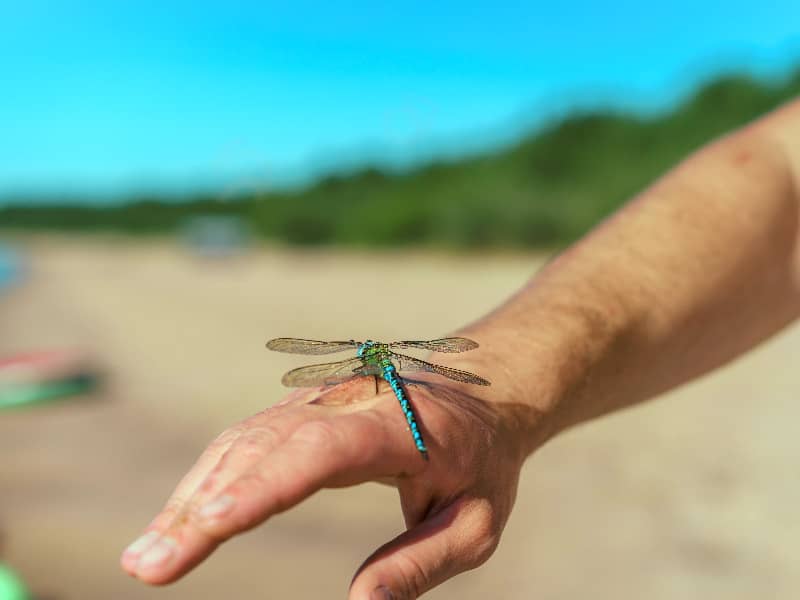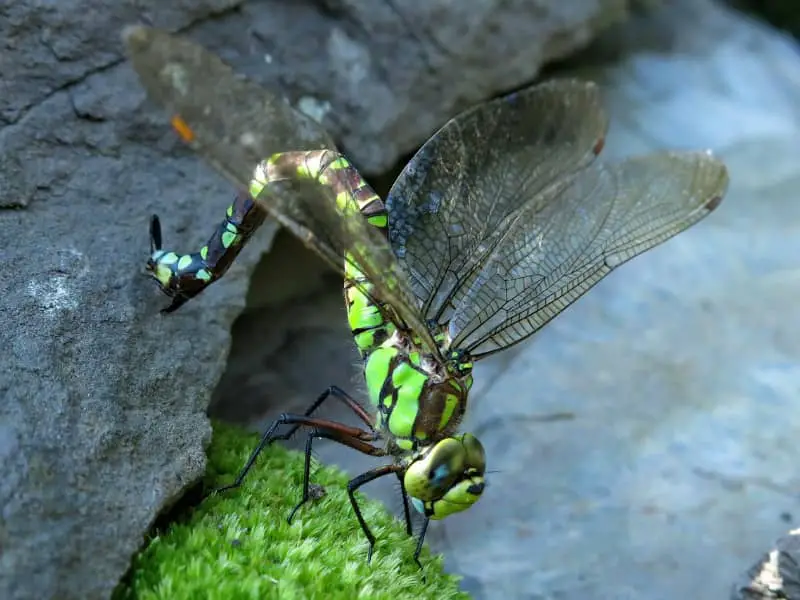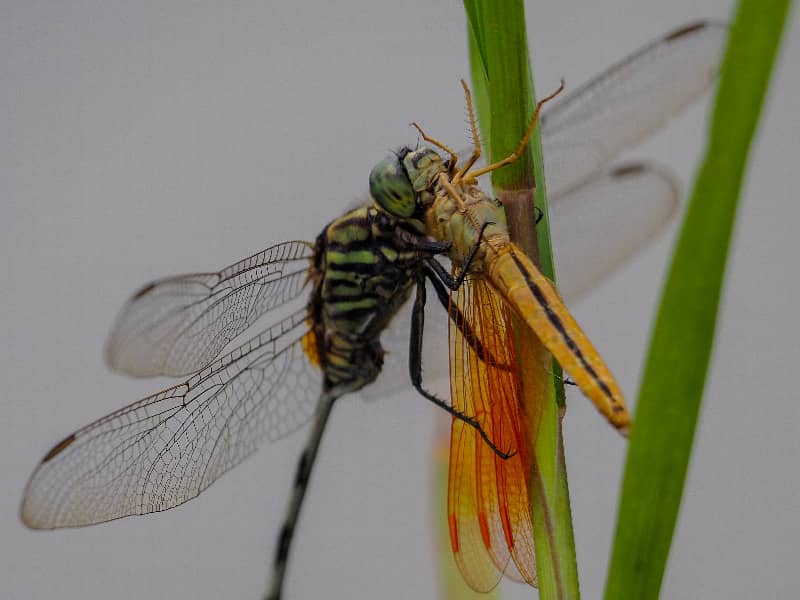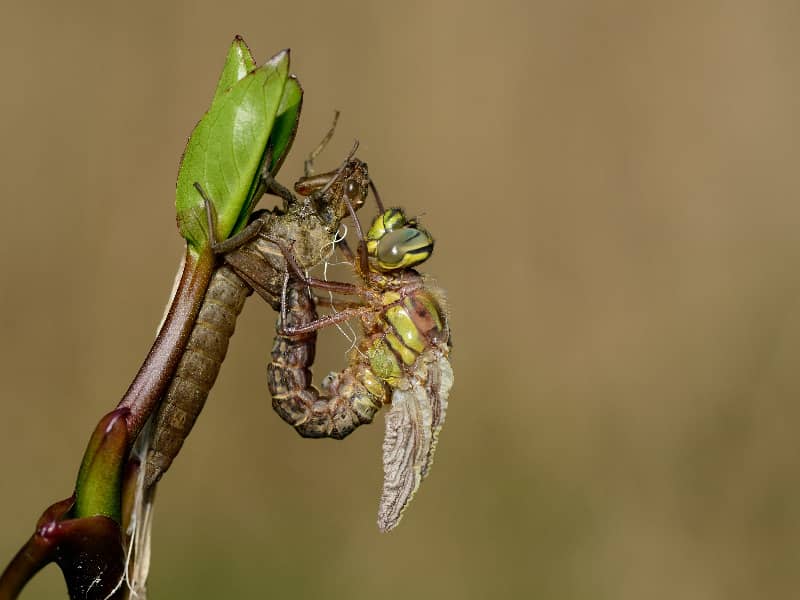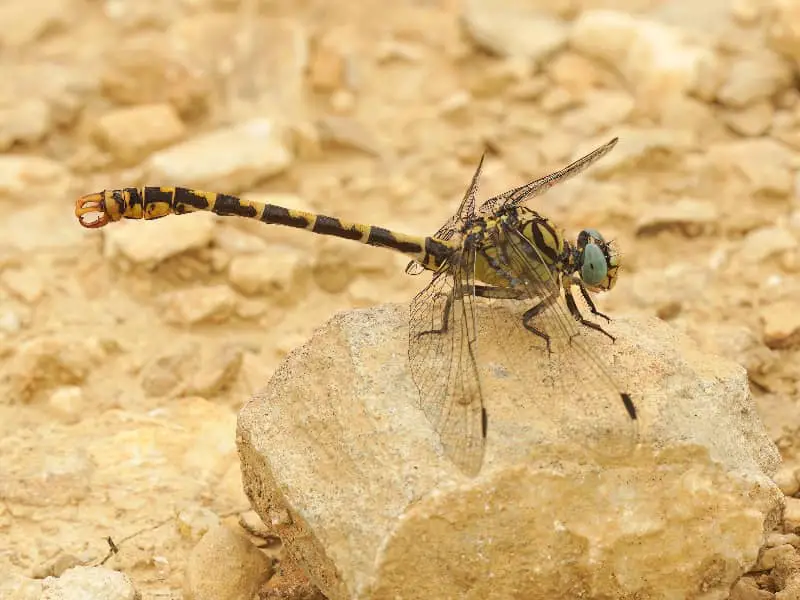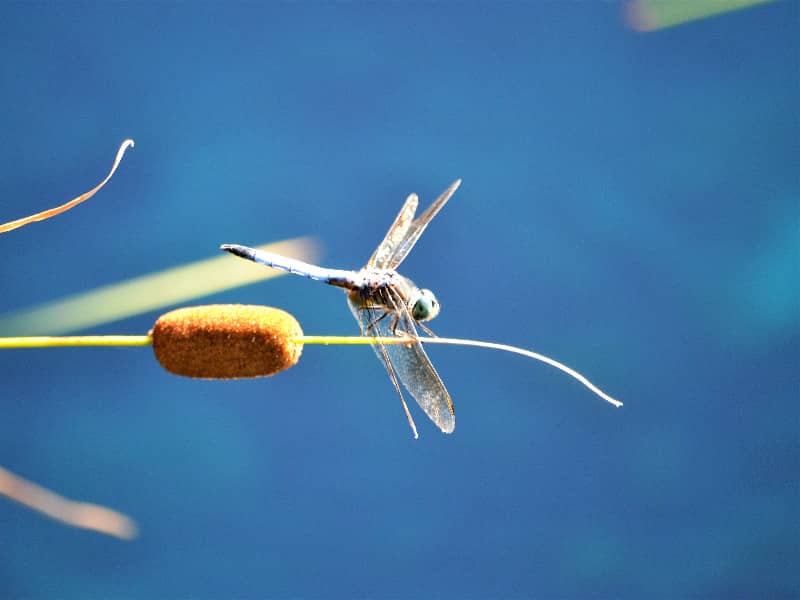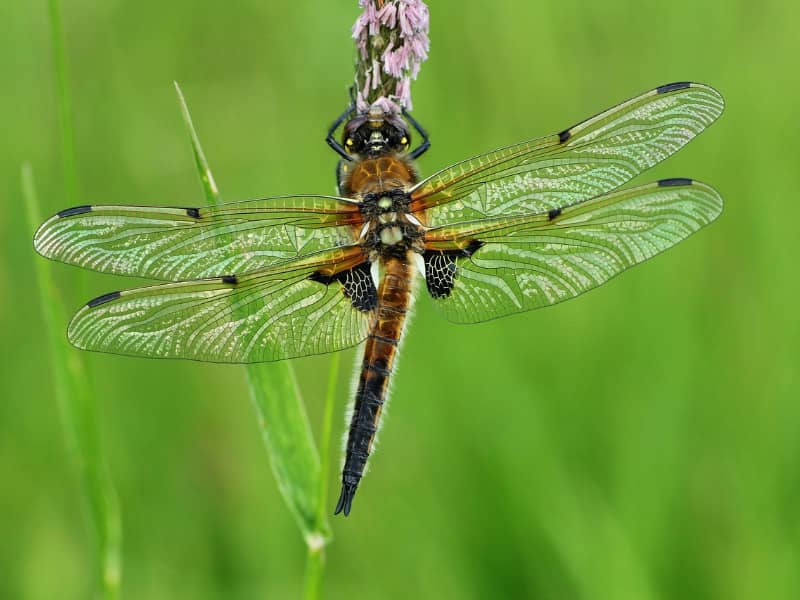
Four-spotted damselfly
The four-spotted damselfly (Platycnemis pennipes) belongs to the damselfly family and is a fascinating species that is widely distributed in Europe. Its scientific name is derived from its distinctive wings, each of which has four dark spots. In this article, we will take a closer look at the physical characteristics, habitat, behavior and importance of the four-spotted dragonfly as an indicator species for aquatic health.
- Four-spotted damselfly
- Physical characteristics of the four-spot damselfly
- Four-spotted damselfly - habitat and distribution
- Four-spotted damselfly - life cycle and behavior
- The four-spotted damselfly as an indicator species
- Threats and conservation measures for the four-spotted damselfly
- Interesting facts
- Similar species and how to distinguish them from the four-spotted dragonfly
- Conclusion
- FAQ
Physical characteristics of the four-spot damselfly
The four-spotted damselfly is distinguished by its characteristic wings, which have four conspicuous dark spots in both sexes. Body size varies between the sexes, with males being slightly smaller than females. Males have a body length of about 35 to 40 millimeters, while females are slightly larger and can reach a body length of about 40 to 45 millimeters.
The body of the four-spotted damselfly is slender and elongated. The color varies depending on sex and age. The males have a bright blue coloration, while the females have a brownish color with blue spots. The eyes of the four-spotted dragonfly are large and composed of many facets, which gives them excellent vision.
The wingspan of the four-spotted dragonfly is about 50 to 60 millimeters. The wings are transparent, which allows them to move elegantly and quickly through the air. The four-spotted dragonfly is known for its acrobatic flight maneuvers and its ability to hover in the air.
Four-spotted damselfly - habitat and distribution
The four-spotted damselfly is widespread in Europe and occurs in various habitats. It prefers calm waters such as ponds, lakes, slow-flowing rivers and canals. These waters provide ideal conditions for the reproduction and development of the four-spotted dragonfly. They also need abundant vegetation near the water to hide and hunt.
In terms of distribution, the four-spotted damselfly is found throughout Europe, from Spain and Portugal in the south to northern Europe. It is also found in parts of Asia and North Africa. The four-spotted damselfly is adaptable and can survive in different climates as long as suitable waters and food sources are available.
During the warmer seasons, the four-spotted dragonflies are particularly active and can be seen in large numbers. They are usually seen from April to September, with peak activity in July and August.
Four-spotted damselfly - life cycle and behavior
The life cycle of the four-spotted damselfly includes several stages of development, starting with the egg, which is laid in the water. The eggs hatch after a few weeks and the larvae, also called nymphs, live in the water. The nymphs go through several molts and grow gradually.
After a development period of several months, the nymphs crawl out of the water and pupate. The pupation usually takes place on plants or other structures near the water. After a few weeks, the adult dragonflies hatch from the pupae and begin their life on land.
Adult four-spotted dragonflies are diurnal insects and spend most of their time flying and searching for food. They feed mainly on small insects such as flies and mosquitoes. Males defend their territory and look for females to mate with. The females lay their eggs in aquatic plants to start the life cycle all over again.
The four-spotted damselfly as an indicator species
The four-spotted damselfly plays an important role as an indicator species for water body health. Since it depends on clean and well-structured waters, its presence or absence can provide important information about the condition of a water body. If the four-spotted dragonfly is present in a water body, this indicates good water quality.
The four-spotted damselfly is sensitive to pollution and environmental changes. If their populations decrease or they disappear from a certain area, this may indicate that the water body is polluted or its living conditions have been affected. Therefore, protecting and preserving the habitats of the four-spotted dragonfly is of great importance for maintaining biodiversity and aquatic health.
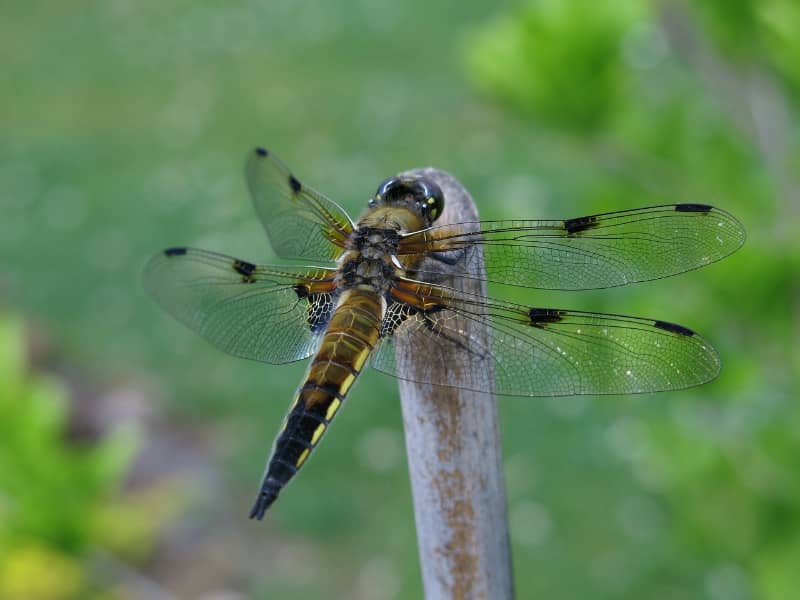
Threats and conservation measures for the four-spotted damselfly
Like many other dragonfly species, the four-spotted dragonfly faces various threats. Habitat loss due to wetland drainage and destruction of riparian vegetation are some of the main threats to this species. The use of pesticides in agriculture can also be harmful as they can affect water quality.
Several actions are needed to protect the four-spotted damselfly and its habitat. Preserving wetlands and creating new habitat are critical. Reducing the use of pesticides and protecting water quality can improve conditions for the four-spotted dragonfly. Educational programs and awareness campaigns can also help raise awareness of the need to protect this fascinating species.
Interesting facts
- The four-spotted damselfly can live up to two years.
- Male four-spotted dragonflies are territorial and defend their territory against other males.
- The four-spotted dragonfly is one of only a few dragonfly species that can occur in urban habitats as long as suitable water bodies are available.
- The four-spotted damselfly is able to quickly and accurately catch its prey in flight.
- The flight season of the four-spotted damselfly coincides with the flowering season of many aquatic plants, which provides them with an abundant food source.
Similar species and how to distinguish them from the four-spotted dragonfly
There are some species of dragonflies that can look similar to the four-spotted dragonfly. One of these species is the common damselfly (Enallagma cyathigerum). The Common Darter also has four spots on its wings, but unlike the Four-spotted Darter, these spots are not as distinct. The common damselfly also has a different body size and slightly different coloration.
Another similar species is the Large Damselfly (Ischnura elegans). This dragonfly also has four spots on its wings, but its wings are more transparent and the spots are smaller and less pronounced than in the four-spotted dragonfly. The Large Damselfly also has a different body size and coloration.
Conclusion
The four-spotted damselfly is a fascinating species that is widely distributed in Europe. Its distinctive wings and elegant flight make it a popular species for nature lovers to observe. The four-spotted dragonfly also plays an important role as an indicator species for water health and promoting its protection is of great importance. By preserving and creating suitable habitats, we can ensure that this fascinating dragonfly species continues to enrich our waters in the future.
FAQ
Question: Are four-spotted dragonflies dangerous to humans?
Response: No, four-spotted dragonflies are not dangerous to humans. They do not sting and are generally harmless.
Question: How can I attract four-spotted dragonflies in my garden?
Response: To attract four-spotted dragonflies in your garden, you can create a small body of water and plant aquatic plants. Avoid the use of pesticides and provide enough vegetation near the water body.
Question: How long is the life cycle of a four-spotted dragonfly?
Response: The life cycle of a four-spot dragonfly usually takes about a year, from egg laying to hatching of the adult dragonflies.
Question: Can four-spotted dragonflies be observed in urban areas?
Response: Yes, four-spotted dragonflies can occur in urban areas as long as suitable water bodies and food sources are available.
Question: How can I help protect four-spotted dragonflies?
Response: You can help protect four-spotted dragonflies by working to conserve habitat, reduce pesticides, and raise awareness to protect this species.
Author
Last posts
- 15. March 2024ChickensRobuster Kunststoffzaun für Hühner – Tipps
- 13 October 2023DragonfliesBlue feather damselfly
- 12 October 2023DragonfliesYellow dragonfly - What are the species?
- 12 October 2023DragonfliesEarly Adonis Damselfly

